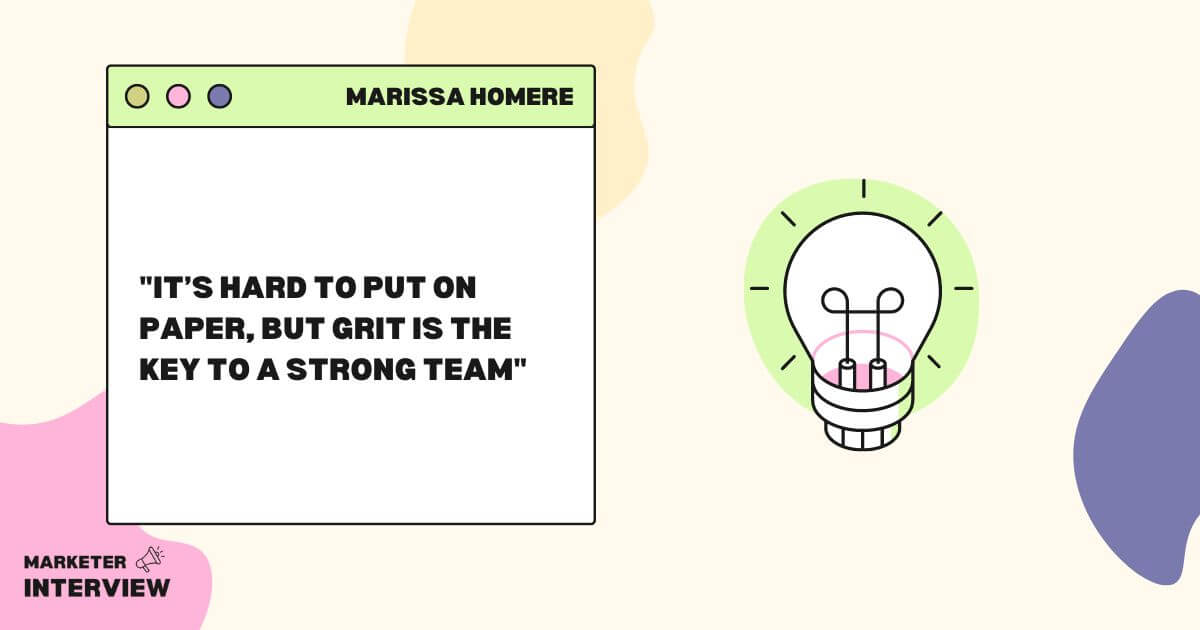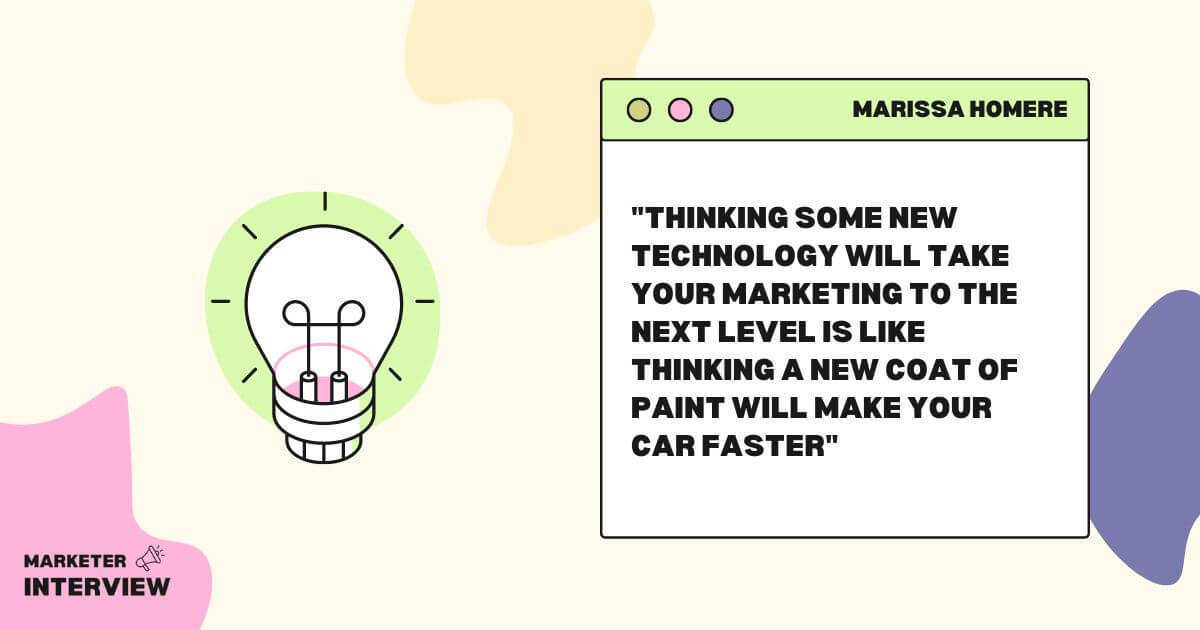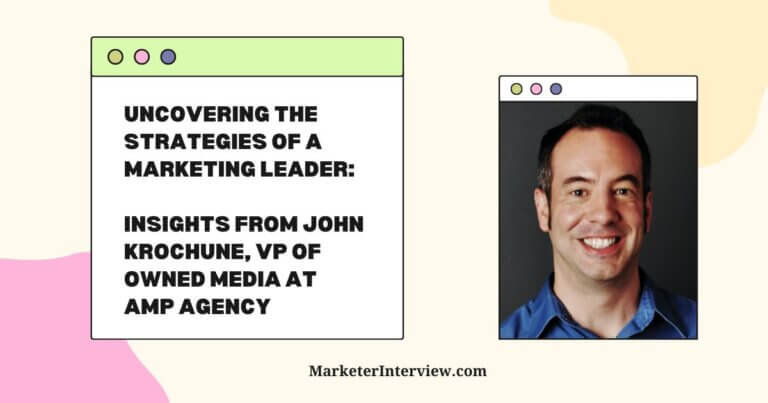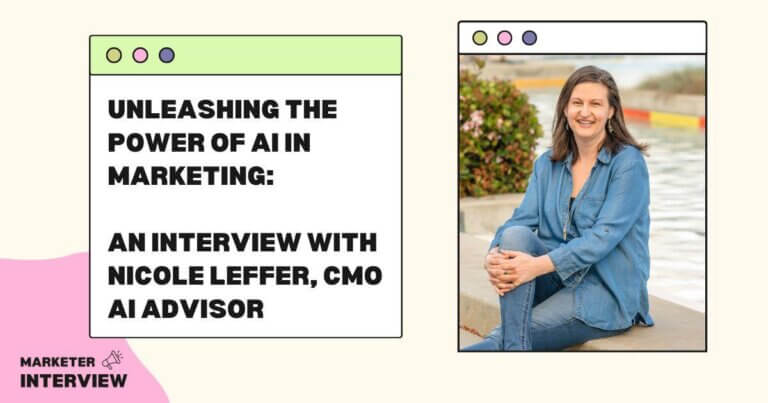Unveiling Marketing Brilliance: Marissa Homere on Building High-Performing Teams
Welcome to Marketer Interview, the leading blog that dives deep into the marketing world and showcases industry experts’ experiences and insights.
Today, we have the privilege of speaking with Marissa Homere, an accomplished marketing and demand generation leader with a wealth of knowledge in leadership, growing marketing departments, demand generation, and branding.
Currently serving as the VP of Marketing at Irwin, a prominent investor relations and capital markets software company based in Toronto, Marissa has an impressive track record of driving revenue and brand growth across various sectors.
From her extensive experience building and scaling marketing teams to her notable achievements in organizations like REALTOR.ca, Xplornet Communications, and Corel, Marissa offers valuable insights that aspiring marketers can learn from.
Contents
- 1 Could you share the story of how you entered the marketing field with us? What attracted you to this dynamic industry?
- 2 Having successfully built and scaled marketing teams in various sectors, what are the essential qualities you look for when assembling a high-performing team?
- 3 What strategies have you found most effective for fostering a culture of innovation and creativity within your marketing department?
- 4 How do you align marketing objectives with overall business goals and ensure a cohesive strategy across the organization?
- 5 Demand generation plays a crucial role in driving business growth. Could you outline some of the most effective demand gen strategies you’ve implemented throughout your career?
- 6 How do you navigate the ever-evolving marketing technologies in today’s digital landscape and identify the most impactful tools and software for your marketing initiatives?
- 7 Could you share a specific campaign or project that posed unique challenges and required innovative solutions? How did you overcome those obstacles and achieve success?
- 8 As a marketing leader, what methodologies or frameworks do you rely on to measure the effectiveness of marketing campaigns and initiatives?
- 9 With your extensive experience, what advice would you give to marketers looking to take their careers to the next level and assume leadership roles within their organizations?
It’s a bit of a funny story.
In my younger years, I had several sales roles, clothing, car sales, gym memberships; you name it. I didn’t love being the salesperson (nor was I very good at it), but I loved understanding why people bought things.
It started with a particular sale of a minivan to a mother with three young kids. She didn’t care about the bells and whistles, but when I pulled out the safety ratings, I saw that I had uncovered the thing that mattered most to her, and that would dictate where she spent her money.
A little while later, I decided to go to college for marketing and landed my first marketing job from my co-op program at a software company.
Having successfully built and scaled marketing teams in various sectors, what are the essential qualities you look for when assembling a high-performing team?
It’s hard to put on paper, but grit is the key to a strong team.
I’ve hired people with no marketing experience but who worked for years in more challenging situations – restaurants, volunteer positions, retail sales, etc. The differentiator in all my team members was their willingness to figure it out.
I also look for values within people that align with myself as a leader and the organizations we work for. This usually boils down to what I generally describe as “good humans.” Teammates that care about the people around them, about creating meaningful impact in the lives of others and their community.

What strategies have you found most effective for fostering a culture of innovation and creativity within your marketing department?
I think the best way to foster creativity and innovation is to:
- Demonstrate those things yourself as a leader: If you’re stuck in your ways and refuse to fight forward, you can’t expect your team to do things differently. Much of this boils down to being open to influence as a leader.
- Get out of people’s way: I give my team a lot of autonomy so they feel comfortable bringing forward their ideas and collaborating with the team to make those ideas a reality.
How do you align marketing objectives with overall business goals and ensure a cohesive strategy across the organization?
This takes a couple of things:
- Strong relationships within the organization. As a marketing leader, it’s essential to have trusting relationships with your executive team, finance, sales, product, and customer success. These relationships enable collaboration and trust that you’ll follow through on your commitments.
- Ensuring you can show and prove the effectiveness of your marketing efforts as they relate to the growth of the business (both new acquisition and customer retention).
- You need to speak the language of your most important stakeholders. So, for example, when working with the finance team, you have to understand their goals and the metrics they’re looking at.
Demand generation plays a crucial role in driving business growth. Could you outline some of the most effective demand gen strategies you’ve implemented throughout your career?
Everything you do as a marketer is demand generation, so as you can imagine, the answer to that question is broad.
I generally think, though, and something that took me a long time to learn is that if you’re not solving a real need – whether through helpful educational content or a “need-to-have” product – no program will succeed in the long term. You might see short-term success with only direct response models, but the key to real demand generation is to solve problems for your customers.
The most successful programs I’ve built have built brand equity that translates into real revenue for the company over long periods and strengthens the direct response programs.
Branding is a fundamental aspect of marketing. Can you walk us through your process of developing a compelling brand identity and effectively communicating it to the target audience?
Branding is an important exercise, whether you’re an established or an emerging brand. Below is the simplest version of that process:
- Understand and codify your brand: More than just a nice logo and a pretty website, you need to work through the tangible (your positioning, brand identity, how you promote your brand to prospects, and the product you put in their hands at the end of the day), and the intangible (the product’s impact and value, your customer experience, the employee experience, the prospect experience, and your company’s reputation). After you understand those elements, you should be able to look at the market and determine where the opportunities lie.
- Then there’s all the work – building a brand takes commitment and time. You need to create buy-in within the organization so that you have the time and capacity to dedicate to brand-building (especially so those efforts don’t get cut when they’re not immediately generating revenue).
- When it comes to string brands, they’re built off of a proper understanding of the desired audience. They’re not rigid, they change over time, and they should aim to deliver value to your target audience at every touch point. This requires constant testing and iteration with your audience to ensure you communicate correctly.
- In a space like SaaS, sharing your product benefits and features is not enough. You have to sell a different world that’s better because your product exists in it while balancing clear and consistent practical messaging.
The truth is – I’ve stopped. Thinking some new technology will take your marketing to the next level is like thinking a new coat of paint will make your car faster.
You can do a lot without all the bells and whistles. One good tool that can do 75% of what you need is much better than multiple tools that require hundreds of thousands of dollars and an entire team to make them (kind of work).
It takes a lot for me to add new technologies to my stack these days. Instead, I’d invest time and resources into existing relationships with vendors expanding their product offerings.

To be honest with you, there are unique challenges with every campaign. As marketers, we’re constantly fighting for space and attention – so your campaigns must be innovative and pattern-disrupting.
An example for you – I was launching a campaign for a VoIP communications company, which had relied solely on digital lead generation at the time. As a mid-size company, this was the best cost/value for the business at the time – until results started to wane over time.
We wanted to reach Canadian businesses in industries like insurance and finance – so we needed to pattern disrupt.
Launching an out-of-home campaign used to mean there weren’t any of the tracking benefits that come with digital, plus to appear in major urban centers was out of budget.
So we approached an innovative out-of-home provider and partnered with an agency specializing in geo-fencing physical assets (billboards). To circumvent the high costs in big cities, we decided to focus our efforts on industrial parks that contained a high volume of insurance and finance companies. We increased the number of billboards in those small areas and placed a geofence around all the businesses so that we could retarget the foot traffic for another 90 days online.
This gave us the benefits of trackable digital advertising while showing up physically in their space and building repeatable touchpoints in our target audience. The campaign earned multiples in ROI, and we were able to innovate while using a very traditional marketing medium.
As a marketing leader, what methodologies or frameworks do you rely on to measure the effectiveness of marketing campaigns and initiatives?
We have a culture of accountability at Irwin, and I also build this into my programs. We use a few tools to track our digital programs and leverage our sales team and some helpful technology to attribute our success at events and conferences.
The key to proper measurement is to remove the ego from measurement – we apply different metrics and standards to efforts that are meant to be brand-building than we do when it comes to digital demand programs, for example.
More than proving that something “worked,” the important thing is its contribution to revenue – whether in 30 days or 3 years. Ultimately we want to help customers and the larger community grow our business sustainably.
With your extensive experience, what advice would you give to marketers looking to take their careers to the next level and assume leadership roles within their organizations?
My advice is to level up your emotional intelligence – this will be your most critical skill when it comes to leadership, both for managing people and for communicating and collaborating with your leadership team.






